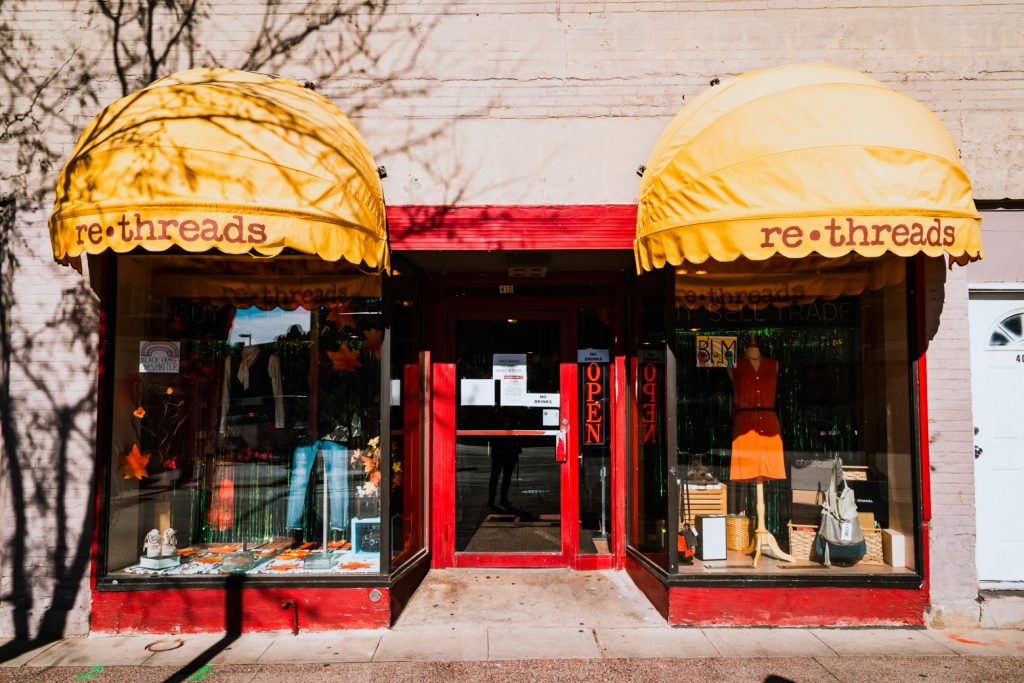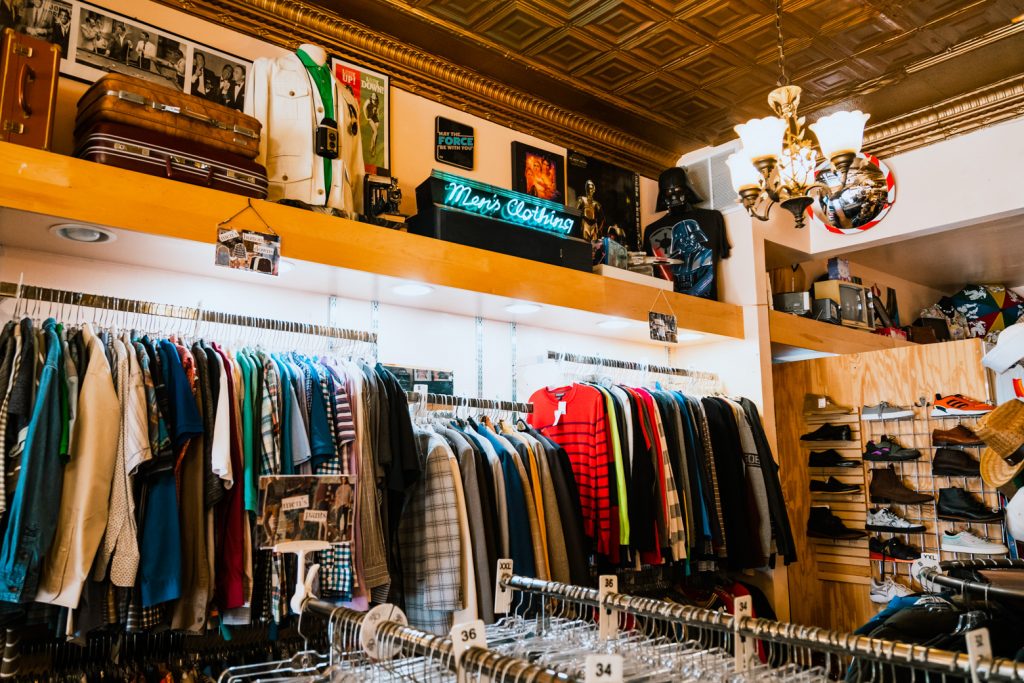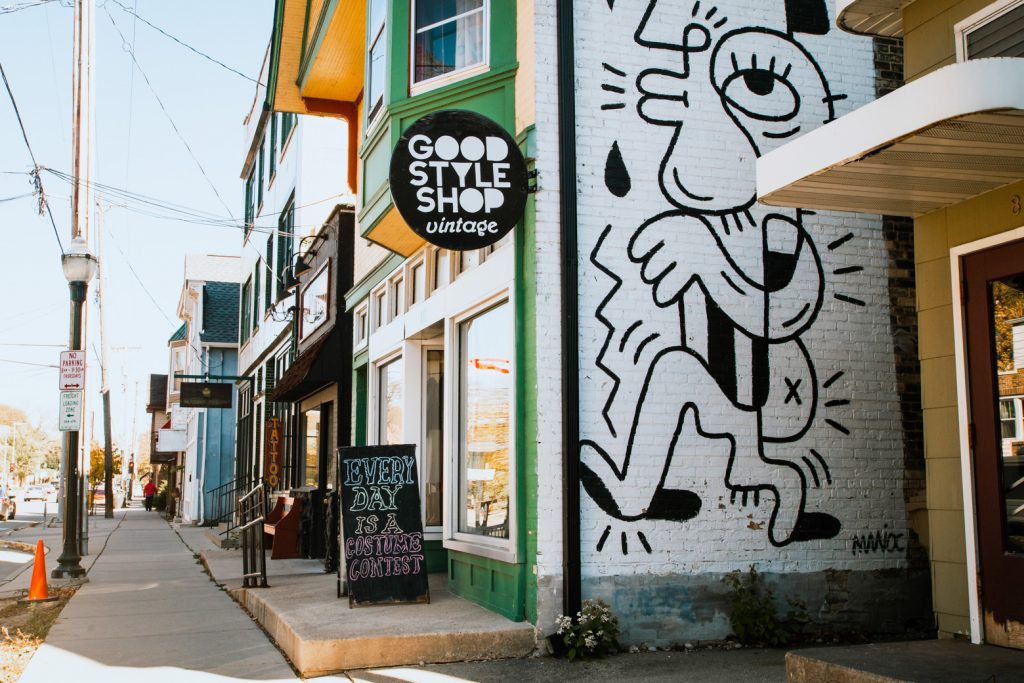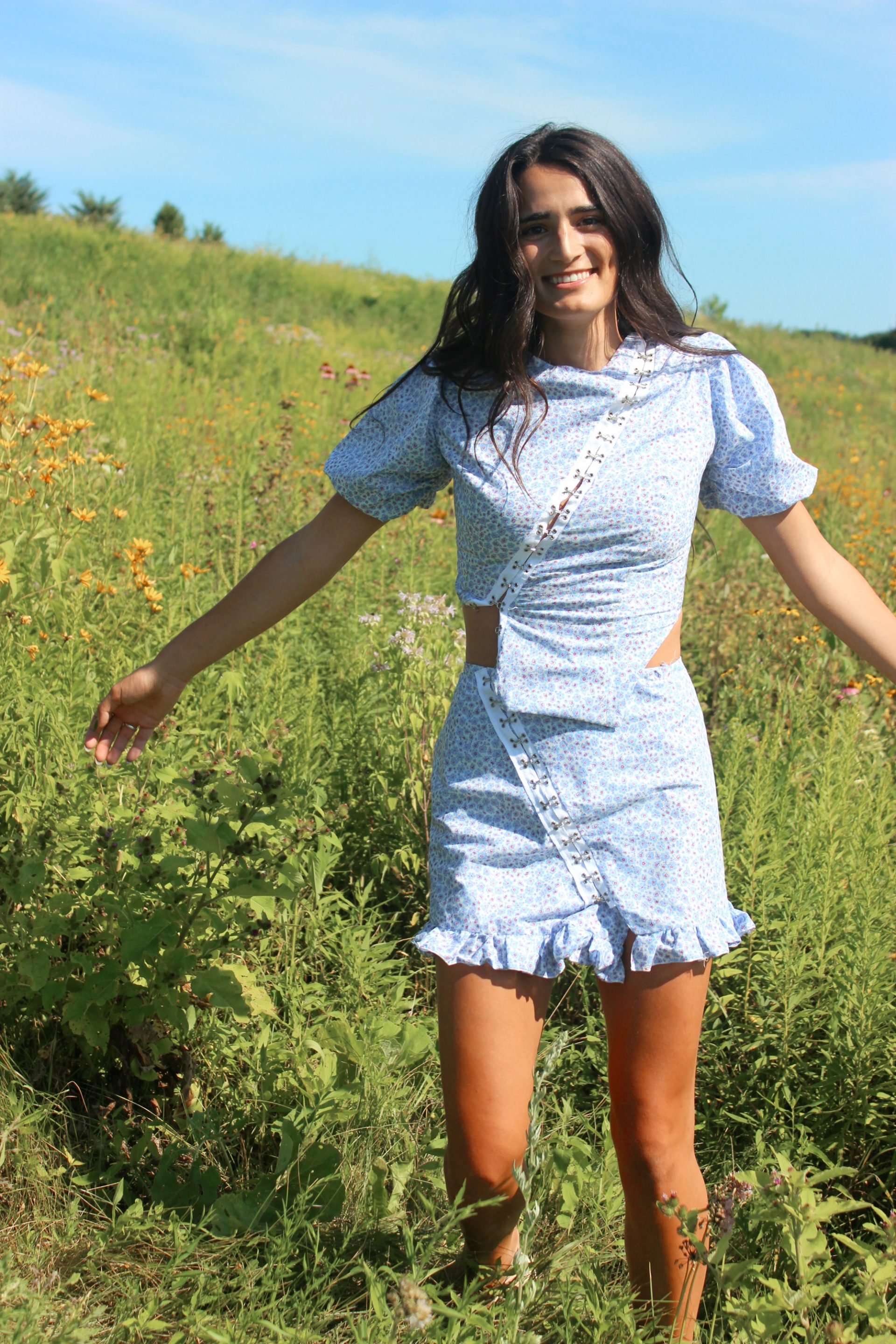Build a more sustainable closet and help save the world
Written by Ellen Pucel
Thrift stores are like magic.
They are vibrant and mysterious in a way that intrigues a shopper to keep sifting through the racks and tables of clothes until they find the perfect piece. Once they do, the mystery builds behind each piece of clothing.
Who wore this once? What decade was it made in? What type of closet was it in before mine?
Thrifting is a key way we can help reverse the overconsumption trend of the fashion industry. This process starts right in our own closets: recycling clothes, buying from thrift or vintage stores and donating items that sit in closets for years on end. Although easier said than done, buying local and shopping vintage are some of the ways people can start to shrink overall waste.
Over the last few years, fashion companies have been scrutinized for their contributions to unsustainable fashion practices which are generating large amounts of wastewater. In the last two decades, American textile waste has doubled from 7 million to 14 million tons, as reported by Newsweek in 2016.
Why Thrift?
Working to combat climate change on a global scale seems daunting, yet consumers can start to help reduce waste right from their homes — more specifically, their closets. Approximately $185 million worth of clothing goes into landfills each year, according to the Waste and Resources Action Programme. If we continue to consume at this rate, then the accumulation of waste is going to lead to harmful environmental effects.
The clothing that is ending up in landfills contains dangerous chemicals and synthetic materials that don’t biodegrade. The United Nations’ Environment Programme says 60% of the clothes made around the world contain synthetic materials.
With the right tools and information, consumers can look to update their buying patterns to reduce waste. Many local thrift stores work to promote sustainability and community involvement, including those across Wisconsin.
Sustainability in Wisconsin
ReThreads, a sustainable fashion boutique, sits in the heart of Madison. Part of the store’s mission is to promote a new way of shopping for clothes that directly aligns with the sustainability movement.

“I grew up in Latin America and [much of what] we had was recycled because we utilized the resources to their maximum,” says ReThreads owner Jacqueline Irivarren.
Because of these cultural values, Irivarren continues to share personal recycling beliefs within her work and throughout her community with hopes to encourage others about the benefits of buying secondhand.
Stores like ReThreads help keep clothes out of landfills and harmful fabrics from polluting the land with synthetic fibers and dyes. Shopping secondhand has a greater effect on the planet than many consumers even realize.
Donations and Re-Sale
Clothing Donations
Since the spread of the coronavirus, there has been a correlation between stay-at-home orders and a spike in clothing exchanges at stores like ReThreads. With more people at home sifting through wardrobes and dressers, prospective consumers are eager to donate and resell their items.
When it comes to adding new inventory to her store, Irivarren is especially focused. She focuses on the condition of the item, whether another shopper would potentially purchase it, and current trends and styles. Irivarren also looks to incorporate labels that promote local artists and sustainable practices, and is selective with items since ReThreads aims to provide unique clothing with a second home.

The store’s mission is “to give others the opportunities to wear those items that are still in great condition, that still have many, many miles on them, and that are great labels, and are fashionable and are clean,” Irivarren says.
When preparing to donate or exchange clothing at a secondhand store, make sure each piece is in good condition with no rips, holes or stains, so it is able to make it through a second life.
Open Up a Virtual Closet
If there are no local thrift stores or secondhand shops within the area, there are alternative ways buyers and sellers can take part in consignment.
Poshmark is an online platform that allows consumers to buy and sell clothing right from their closets at home. After signing up for an account, consumers can post anything they want to sell to their virtual closets. When posting, make sure to describe each item as specifically as possible to ensure honesty with each purchase and transaction.
Another online retail platform consumers can look into is The RealReal. The RealReal sells authenticated luxurious consignment items, and has both an in-store and online presence that allows shoppers to buy secondhand clothing and accessories for discounted prices.
Additionally, the company offers shoppers the opportunity to participate in their consignment program. People can send in their clothing, and if it is accepted for resale, consumers are offered store credit or a check in return. This further encourages shoppers to buy vintage clothing and to submit their own pieces, all crucial steps to keep the vintage clothing cycle running smoothly.
Subscribe, Don’t Buy!
Another way curious shoppers can take advantage of consignment and vintage shopping is through subscription-based retail.
Rent the Runway differs from online resale companies since it centers around a rental system. They offer monthly subscriptions for those looking to frequently rotate their closet in an eco-friendly fashion. Once shoppers choose a plan, they are able to pick out a certain number of items and then return them whenever. Rent the Runway is cultivating a new way to get “new” clothing that further pushes sustainability and encourages shoppers to rent instead of buy.
What To Know When Buying New
Time to Avoid Cotton
One reason we have so much to donate is that we’ve simply overshopped without thinking about how our clothing is made.
Erin Schaut is a senior studying textiles and fashion design at UW–Madison. In this program, she is learning the details of various design practices, such as which materials have what effect on the environment. Schaut points primarily to cotton as an example of a material with a harmful effect since it’s a common textile used widely across the fashion industry — though it may be pushed out of production sequences eventually.
Photos by Erin Schaut
Today’s mass cotton production practices are hazardous and traces of toxic chemicals have been found in clothes and waterways. Additionally, creating cotton requires large amounts of water, energy and materials, which has a destructive impact on the environment. Some estimates say it requires about 700 gallons of water to make one cotton t-shirt.
“Cotton is honestly the worst you can do,” Schaut says. “It just uses so much water.”
As consumers purchase new items, it is important they learn what companies promote and what they are doing to incorporate sustainable supply chain practices. Information about what a business stands for can often be found on company websites, in stores or even printed on tags.
Corinne Ebel, 23, a recent graduate of UW–Madison’s textiles and fashion design program, says she would be more inclined to tell other people to understand what other companies do behind the scenes.
Ebel also received an associate’s degree at the Fashion Institute of Technology in New York City, where she combined her sustainability certificate from her undergraduate work with the business side of the fashion industry, eventually leading her to work at Kohl’s.
Along the way, Ebel learned about design practices and business models that help advance greener methods of clothing production. One of the fashion industry niches Ebel focuses on is the positive environmental response when designers switch fabrics from cotton to recycled polyester.
“The push to recycle polyester-based products is so much greater than the push to create organic cotton materials. I think that is a huge knowledge gap with buyers, that they think these plant-based materials must be organic and healthy,” Ebel says. “That’s the green marketing that people don’t understand.”
Beware of Green Marketing
Before deciding to buy an item from a specific brand, shoppers are becoming more inclined to research a company’s guidelines and brand mission. In 2018, a business report from Accenture Strategy found that 62% of consumers want to buy products from companies with ethical values and authenticity.
While green marketing has proven to be a powerful business tool in strengthening a company’s brand reputation, consumers are also seeing a rise in greenwashing — an exaggeration of green marketing and overemphasis on possibly dubious eco-friendly practices. In recent years, some companies have been exposed for over-promoting their only slightly sustainable products.
One of those companies was H&M, the Swedish retail fashion company. H&M was recently accused of greenwashing a new line, the Conscious Collection. This line was marketed as eco-friendly, but these products still use new materials and don’t necessarily slow down textile overconsumption.
It’s important to know background information about a company when buying a new product to ensure that the product is true in its eco-friendly design. Some businesses are straying from green marketing altogether and instead are urging consumers to participate in alternative buying habits such as thrifting new items, donating clothes and shopping local.
Shopping Vintage
A different form of recycling involves vintage stores, which sell retro pieces of clothing from different eras. While some vintage stores buy clothing from customers, not all do, and are instead focused on the art of fashion.

Shoppers in Madison can visit Good Style Shop, a vintage clothing store that features unique and stylish articles of clothing. Many shoppers consider vintage to be a sustainable clothing choice, though Good Style Shop owner Peter Benck says the true mission of the store is to cultivate style, authenticity and art, and create a community for people to discover a creative side.
“More specifically, that’s about what you can find on our racks of clothing — as fashion, as art, the ever-changing perspective of what you could make out of your own wardrobe or the people you might meet or the people you might interact with on social media,” Benck says.


